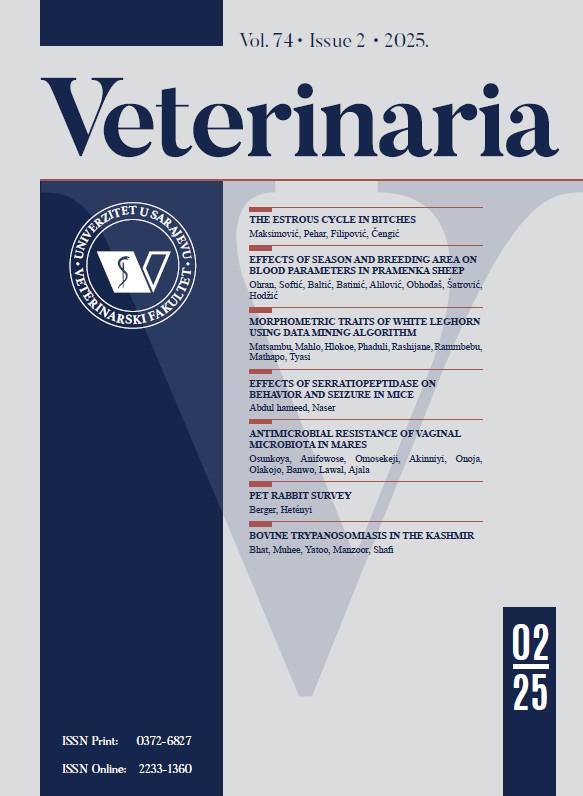Performance and financial analysis in broiler (COBB 430 Y strain): A case study on the feed conversion ratio and mortality rate
DOI:
https://doi.org/10.51607/22331360.2025.74.1.113Keywords:
Biosecurity, feed conversion ratio, mortality, production metrics, profitabilityAbstract
This study investigates the operational, production, and financial performance of broiler farming using the COBB 430 Y strain at the Instructional Livestock Complex (ILFC). A total of 1,439 chicks were reared over 40 days, achieving an average Feed Conversion Ratio (FCR) of 1.52 and an average market weight of 2.12 kg by the final selling phase. The farm’s mortality rate of 4.65%, which was mostly caused by enteritis (6%), and colibacillosis (44.8%), surpassed the aim of 3.18% even though the farm consistently increased its weight. Financially, the farm made a total expenditure of ∼2,55,427, including feed, chick procurement, and health management, while generating an income of ∼2,67,098.95 through broiler sales. This resulted in a modest net income of ∼11,671.95 and a benefit-cost ratio of 1.05, confirming the economic feasibility of the operation despite the challenges faced. The findings emphasize optimizing health management, biosecurity measures, and environmental conditions to minimize losses and enhance profitability. This report provides valuable insights into raising broiler farming and shows how strategic management techniques can lead to sustainable production. In order to further increase productivity and financial returns, future initiatives should focus on health issues including colibacillosis, bettering feed efficiency, and lowering mortality rates.

Downloads
Published
How to Cite
Issue
Section
License
Copyright (c) 2025 Vanlalhmangaihsanga, NK Roy, Lalrinkima, Nabakrushna Praharaj, Samarendra Mohanty, Surita Majumder

This work is licensed under a Creative Commons Attribution 4.0 International License.







